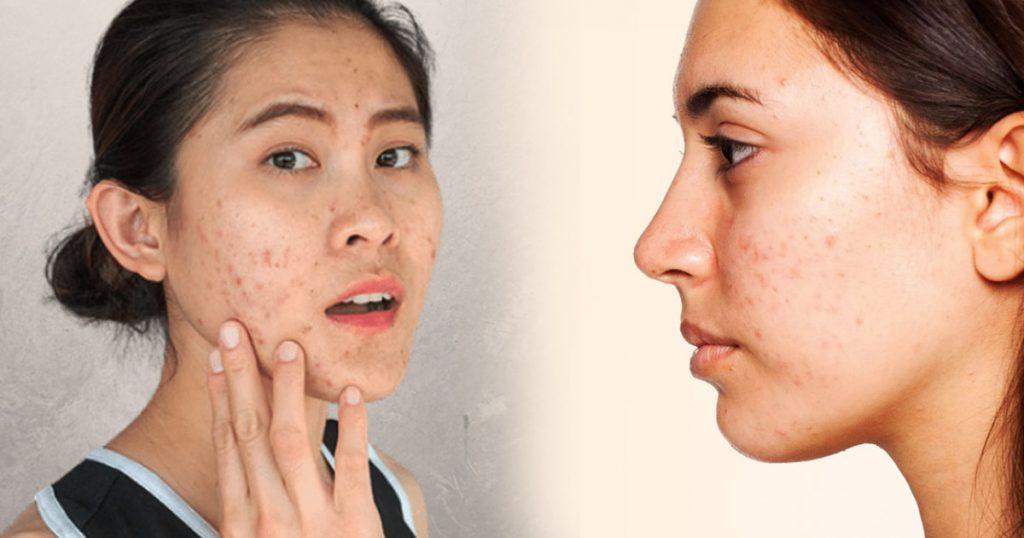Have you ever noticed red or dark spots on your skin after your acne clears up? These marks are most likely caused by post-inflammatory erythema (PIE) or hyperpigmentation (PIH). While they may appear to be in the same condition, they are not. Each has its own set of symptoms and treatment options. To figure out the differences between PIE and PIH, you need to understand what each condition is and see effective treatments for both.
Getting to Know PIE and PIH
Post-inflammatory erythema (PIE) is a skin condition characterized by red or pink marks left on the skin after an inflammatory process, such as acne or eczema. PIE develops when blood vessels in the skin widen as a result of inflammation. It usually manifests as transient redness that might linger for days to several months.
PIE is more common in people with lighter skin tones, as they may notice red marks more prominently than those with darker skin. Importantly, PIE is not a form of scarring; it is a transient change in skin color that fades over time.
On the other hand, post-inflammatory hyperpigmentation (PIH) refers to dark spots or patches that develop after skin inflammation or injury. This occurs when the skin produces excess melanin as a response to inflammation, leading to darker areas where the original irritation or trauma occurred. PIH can result from conditions like acne, cuts, scrapes, or even some dermatological treatments.
PIH is generally more visible in those with darker skin tones because the contrast between the pigmented areas and the surrounding skin is more striking. PIH, like PIE, is not permanent and will disappear with time with proper treatment.
PIE vs. PIH: The Differences
Understanding the differences between post-inflammatory erythema and post-inflammatory hyperpigmentation is crucial for effective treatment and management. Here are some key distinctions:
Color:
PIE: Red or pink skin markings.
PIH: Dark brown or black patches appear on the skin.
Cause:
Both PIE and PIH occur because of skin inflammation, but they happen in different ways.
Causes of PIE
- Inflammation: PIE is often caused by acne, injuries, or skin irritation.
- Vascular Response: When the skin is inflamed, blood vessels expand, which causes redness.
- Skin Type: People with lighter skin are more likely to get PIE because they have less melanin.
Causes of PIH
- Melanin Overproduction: After inflammation, the skin makes more pigment, leading to dark spots.
- Skin Damage: Picking at acne or injuries can make pigmentation problems worse.
- Skin Type: People with lighter skin are more likely to get PIE because they have less melanin.
Duration:
PIE: Typically fades within weeks to months but can last longer in some cases.
PIH: Can take several months to years to fade, depending on the severity and the skin’s healing response.
Treatment Approach:
The best treatment depends on whether you’re dealing with PIE or PIH, as they need different approaches.
Treating PIE
Topical Treatments:
- Vitamin C: Used to minimize redness and improve skin tone.
- Niacinamide: Soothes the skin and reduces redness due to its anti-inflammatory properties.
- Peptides: Help the skin heal and make the skin barrier stronger.
Professional Treatments:
- Laser Therapy: Laser treatments like pulsed dye laser can reduce redness from PIE.
- Intense Pulsed Light (IPL): IPL targets the blood vessels and reduces redness without much recovery time.
Daily Care:
- Use a soft cleanser instead of abrasive scrubbing, which can irritate the skin.
- Always wear sunscreen, as sun exposure can make redness worse.
Treating PIH
Topical Treatments:
- Retinoids: Help the skin shed old cells and fade dark spots.
- Exfoliating Acids: Acids like glycolic or mandelic acid remove dead skin cells that contain pigment.
- Hydroquinone: A powerful lightening agent that inhibits melanin formation, but should only be administered under the supervision of a dermatologist.
Professional Treatments:
- Chemical Peels: These peels remove the top layers of skin, encouraging new, even skin to grow.
- Laser Treatments: Certain lasers can specifically target dark spots without harming the rest of the skin.
Daily Care:
- Always use sunscreen, as sun exposure can make dark spots worse.
- Consider utilizing serums containing vitamin C or niacinamide to brighten your skin.
How to Prevent PIE and PIH
Preventing PIE and PIH is often easier than treating them. Here are some tips to help avoid these marks:
- Treat Acne Early: Address breakouts quickly to lower the chances of developing PIE or PIH.
- Don’t Pick Pimples: Avoid squeezing or picking at acne, as it can make PIE and PIH worse.
- Use Sunscreen: To protect your skin from UV damage, apply sunscreen with a minimum SPF of 30 every day, even on cloudy days.
- Be Gentle: Stick to mild skincare products that won’t irritate your skin.
- Moisturize Regularly: Keeping your skin hydrated helps it heal faster.
- Calm Inflammation: Look for products with soothing ingredients like niacinamide or green tea to reduce inflammation.
- Take It Slow: Avoid overusing treatments, as too much can irritate your skin and worsen PIE or PIH.
Prevent and Treat PIE and PIH Effectively
PIE (Post-Inflammatory Erythema) and PIH (Post-Inflammatory Hyperpigmentation) are common marks left after skin inflammation, like acne. PIE appears as red or pink spots, while PIH shows up as dark spots. Learning the difference helps in selecting the appropriate treatment. Treatments for PIE reduce redness, while treatments for PIH aim to lighten dark spots. To prevent both, treat acne early, don’t pick at your skin, and always use sunscreen.
